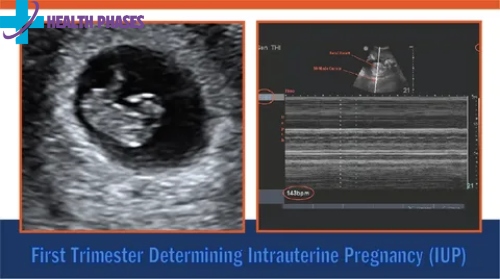Intrauterine pregnancy is a pregnancy that occurs within the uterus (womb). It’s a type of pregnancy that’s often considered to be riskier than other types, and it’s one that you should be aware of if you’re pregnant. This blog post will explore intrauterine pregnancy definition, types, and risks. We will also discuss how you can best protect yourself and your unborn child from potential complications.
Definition of Intrauterine Pregnancy
Intrauterine pregnancy is a pregnancy that takes place inside the uterus, within the uterus itself. Intrauterine pregnancies are classified by how far along they are in their gestation—early (0-9 weeks), late (10-15 weeks), or post-gestational. There are also intrauterine pregnancies that don’t fit neatly into any of these categories, such as twin pregnancies or pregnancies without a discernible gestational age.
There are two main types of intrauterine pregnancy: spontaneous and induced. Spontaneous intrauterine pregnancy occurs when a woman becomes pregnant without any outside assistance—it’s nature’s way of happening. Induced intrauterine pregnancy happens when a doctor helps bring the baby into the world by artificially inducing labor and placing the baby inside the uterus.
Intrauterine pregnancies carry a slightly higher risk for complications than other pregnancies, but this risk is relatively minor overall. The most common complications associated with intrauterine pregnancies include high blood pressure, preeclampsia (a condition characterized by unusually high blood pressure and swelling), cesarean section (a surgery to deliver babies via a cut in the abdomen), and delivery before 37 weeks gestation (preterm birth).
Types of Intrauterine Pregnancy
There are many types of intrauterine pregnancy, each with its risks and benefits. Here’s a look at five of the most common:
- Conventional (natural) pregnancy: In a conventional pregnancy, the sperm, and egg meet in the woman’s uterus and join to create an embryo. About half of all pregnancies in America are conventional.
- Assisted reproductive technology (ART): ART is a term for various techniques used to help humans have children that cannot be conceived naturally. The most common form of ART is using sperm from a different man than the woman’s partner to fertilize her eggs. Other ART forms include in-vitro fertilization (IVF), which uses donor eggs and sperm, and pre-implantation Genetic Diagnosis (PGD), which assesses embryos for genetic disorders before being implanted into the womb.
- IUDs: An intrauterine device is a type of contraception that helps prevent pregnancy by stopping or delaying the release of eggs from the woman’s ovaries. There are two main types of IUDs: Copper IUDs work by releasing copper ions into the uterus, increasing the chances that an egg will get stuck in the fallopian tubes and become fertilized, while hormonal IUDs work by releasing hormones that suppress ovulation. IUDs may be more effective than other contraceptive methods when it comes to preventing unintended pregnancies among young women who have had sexual intercourse.
Risk Factors for Intrauterine Pregnancy
There are key things to know about intrauterine pregnancy, including its definition, types, and risk factors. Intrauterine pregnancy is defined as a germination that occurs within the uterus (womb). Two main types of intrauterine pregnancies are carried by the baby and implantation. The most common type of intrauterine pregnancy is carried by the baby. This means the baby lives in the uterus, but doesn’t gestate there.
The other type of intrauterine germination is implantation. This means that the fertilized egg implants into the uterine wall and begin to grow. Some risk factors for intrauterine pregnancies include being under the age of 18, being African American or Hispanic, having had a previous preterm birth, being obese, or having chronic health conditions like asthma or diabetes.
Treatment of Intrauterine Pregnancy
Intrauterine pregnancy is when a fertilized egg implants in the uterus, usually within the first three weeks of a woman’s menstrual cycle. Intrauterine pregnancies are considered high-risk and can be serious if not treated correctly. There are two main types of intrauterine pregnancies: ectopic and interstitial.
Ectopic pregnancies are when the embryo implants outside the uterus, most commonly in the fallopian tubes. Interstitial pregnancies are when the embryo implants somewhere inside the uterus but doesn’t reach full term; these pregnancies rarely result in any health problems for the mother or child.
Several treatments are available for intrauterine germination, including surgery to remove the embryo and/or placenta, medications to prevent labor or terminate the germination, and either artificial insemination or IVF (in vitro fertilization). Placing an embryo into another woman’s uterus is also an option for some women who want to become pregnant but don’t have any eggs.















